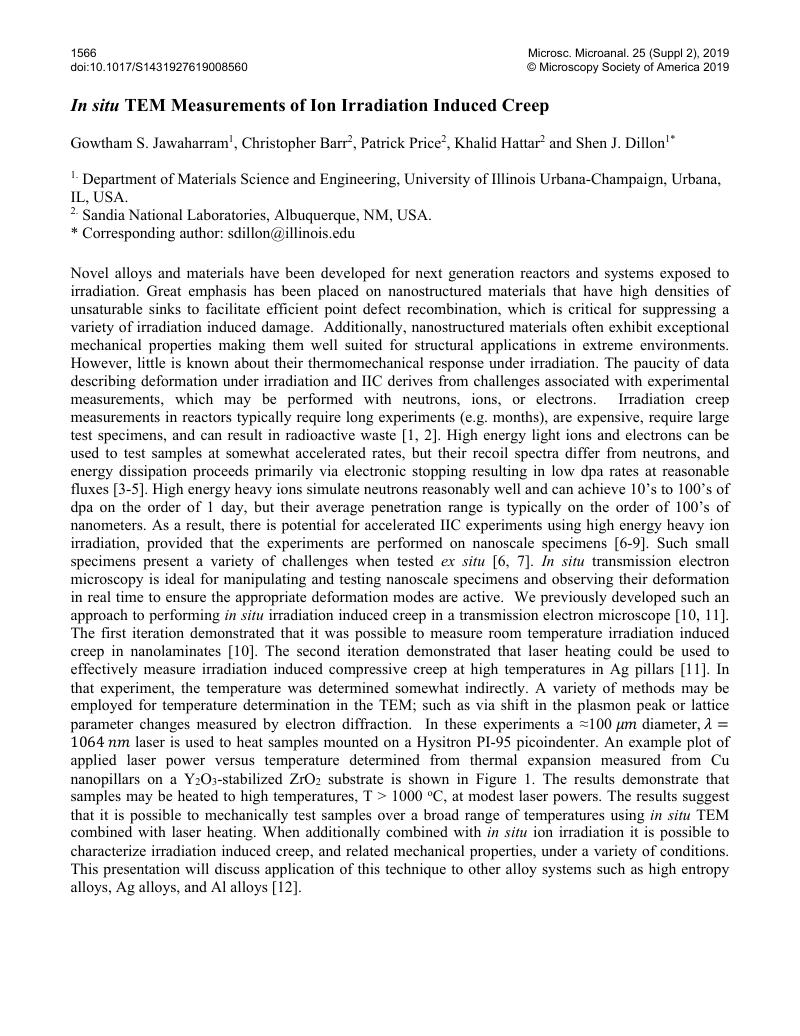No CrossRef data available.
Article contents
In situ TEM Measurements of Ion Irradiation Induced Creep
Published online by Cambridge University Press: 05 August 2019
Abstract
An abstract is not available for this content so a preview has been provided. As you have access to this content, a full PDF is available via the ‘Save PDF’ action button.

- Type
- Microscopy and Microanalysis of Nuclear and Irradiated Materials
- Information
- Copyright
- Copyright © Microscopy Society of America 2019
References
[12]This work was performed, in part, at the Center for Integrated Nanotechnologies, an Office of Science User Facility operated for the U.S. Department of Energy (DOE) Office of Science. Sandia National Laboratories is a multi-mission laboratory managed and operated by National Technology and Engineering Solutions of Sandia, LLC., a wholly owned subsidiary of Honeywell International, Inc., for the U.S. DOE's National Nuclear Security Administration under contract DE-NA-0003525. The views expressed in the article do not necessarily represent the views of the U.S. DOE or the United States Government. G.J. and S.J.D. would like to acknowledge US DOE Office of Basic Energy Sciences, under Grant DEFG02-05ER46217.Google Scholar




